Tongeren (Tongres in French) in Limburg is the oldest city in Belgium, founded by the Romans in 10 AD as Atuatuca Tongrorum. Now it’s a city of 32,000 people and home of the Gallo-Roman Museum (Gallo-Romeins Museum). I hadn’t been since childhood. But until 2 June 2024 the museum hosts the ‘Antiquity in Colour‘ exhibition so I visited to have a look.
“You probably know then: the white marble statues from classical antiquity. But did you know that the ancient Greeks and Romans painted them colourfully, from head to toe? In this fascinating exhibition you will experience how the sculptures appeared to Greek and Roman eyes”, the Gallo-Roman Museum asks you.
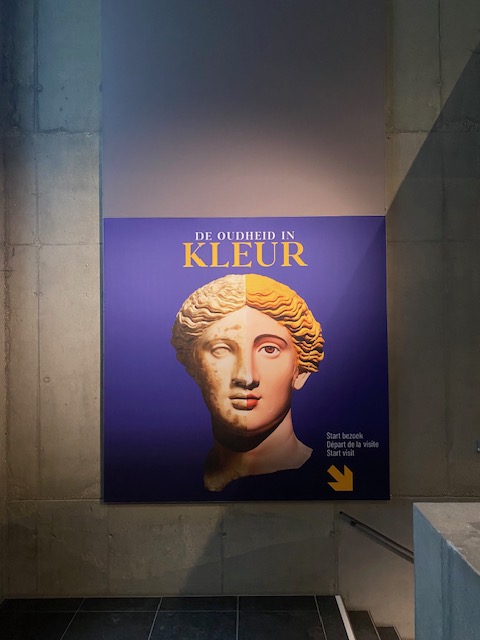
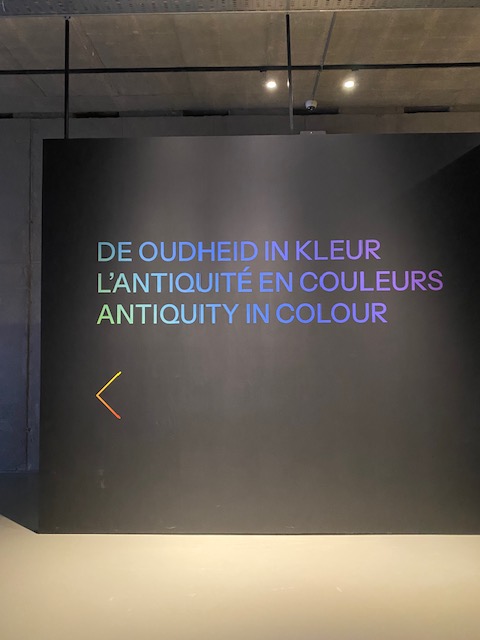
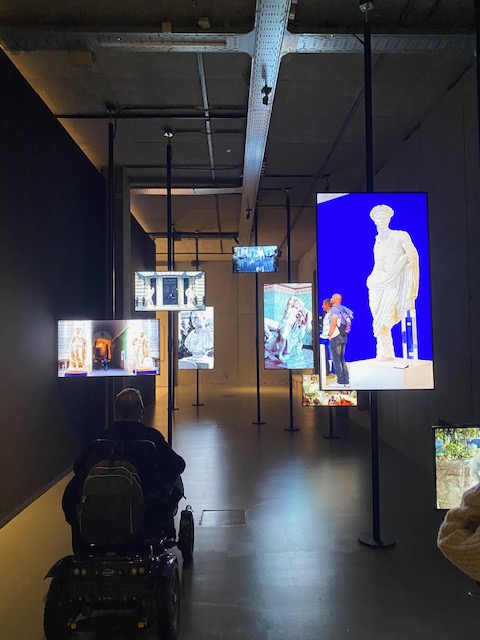
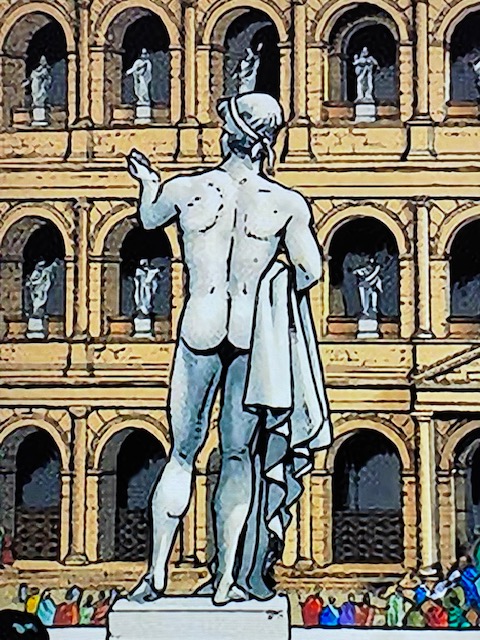
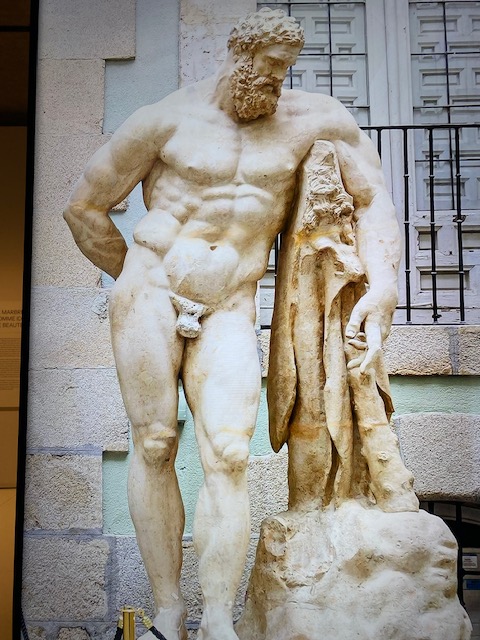
Not white, but polychrome
How were white marble sculptures painted in classical antiquity? German archaeologists Prof. Dr. Vinzenz Brinkmann and his wife Dr. Ulrike Koch-Brinkmann have been researching this question for years. Together they have made dozens of full-size reconstructions, faithful to the techniques of the time. The colourful statues of emperors, gods, and mythological figures have travelled the world, captivating the of hundreds of thousands of viewers. Now these statues can be seen in Tongeren.
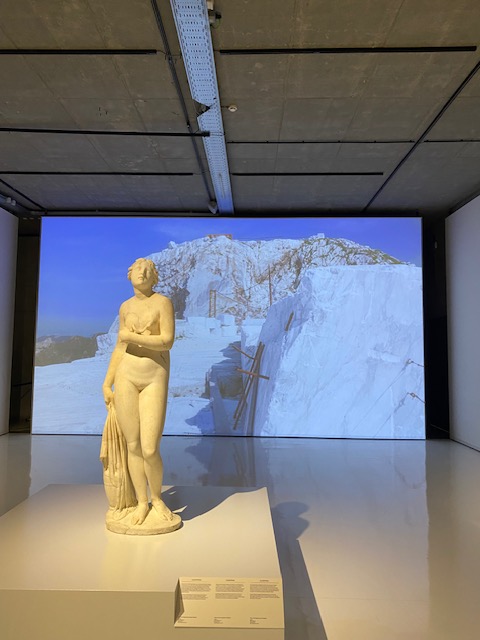
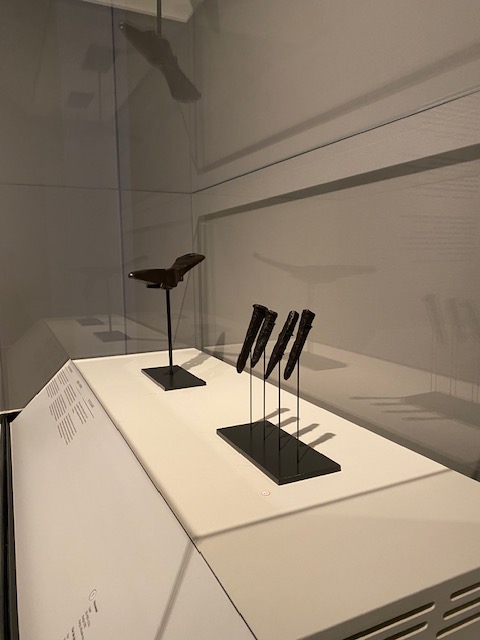
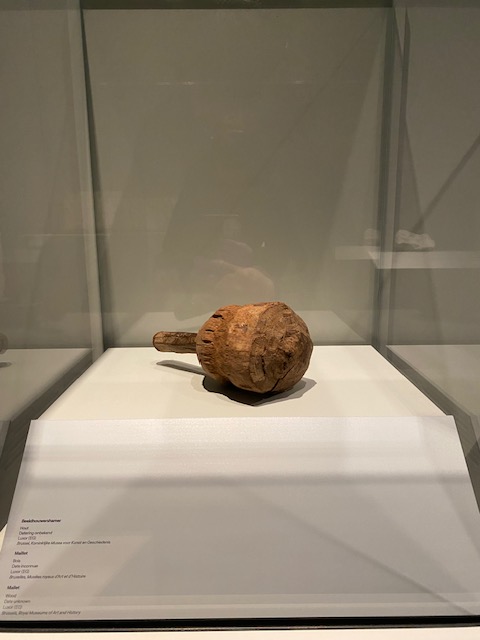
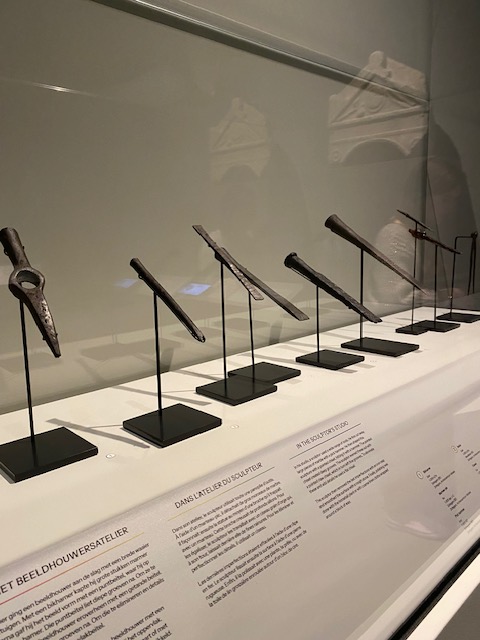
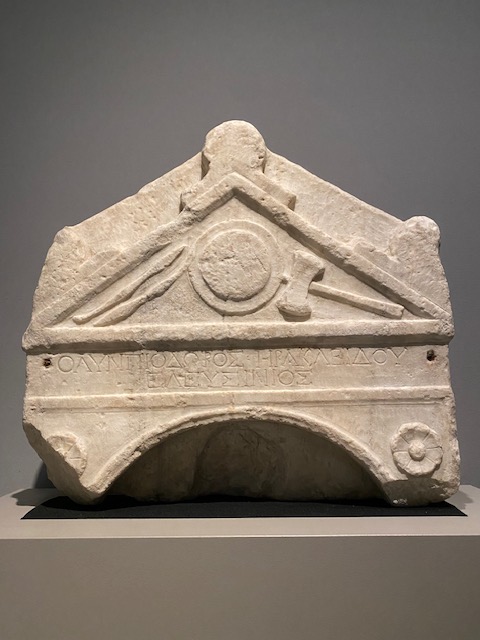
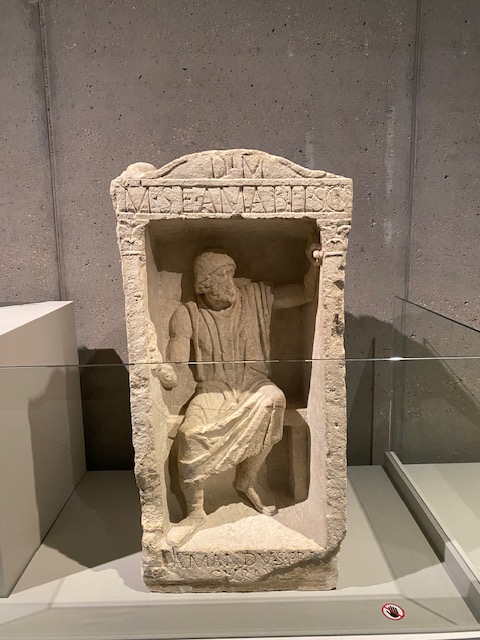
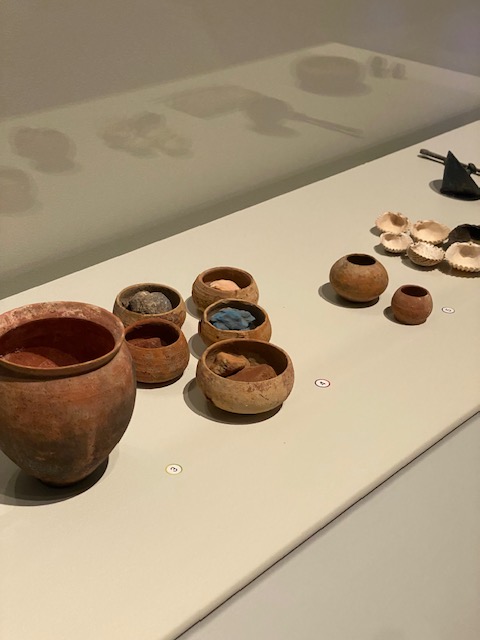
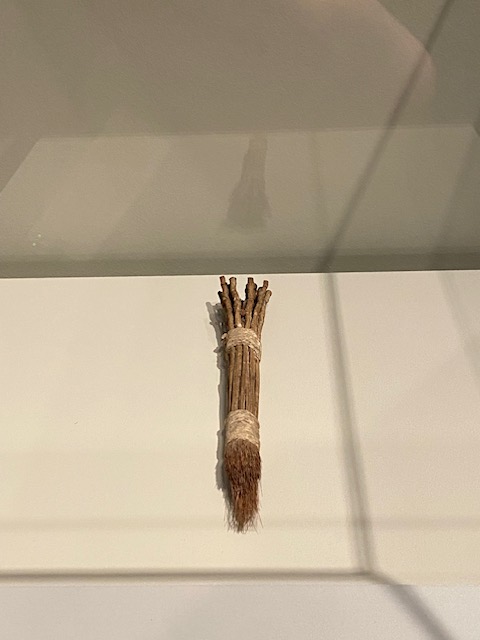
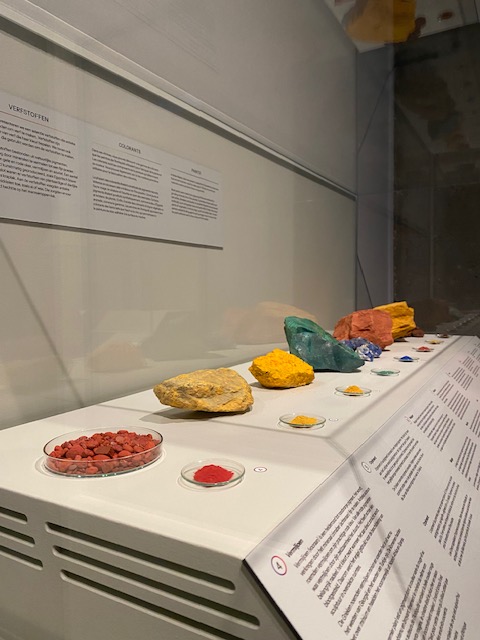
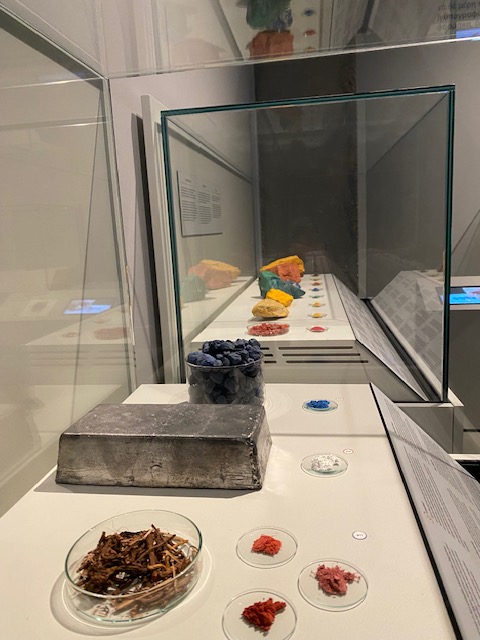
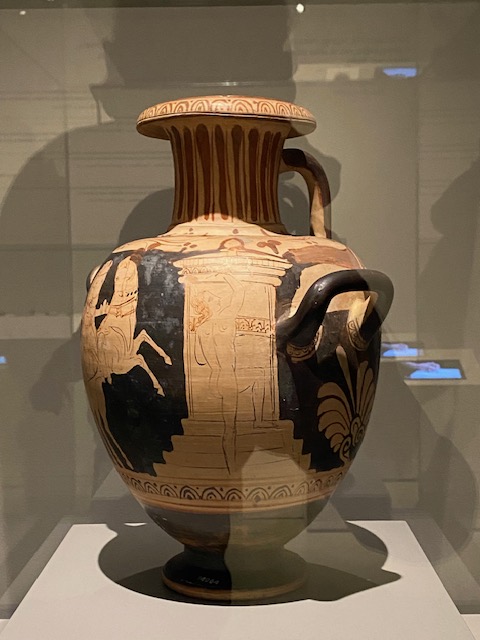
An immersive experience
A video installation takes you into the exhibition. You discover how often we come across those white marble sculptures: in museums, gardens, films, and comics.
A little further on, you will see three life-size, authentic statues. The masterpieces are powerfully displayed in a white glossy space. There is a film, showing atmospheric images of a marble quarry near Carrara in Italy.
In another room yourself in the courtyard of a house in Delos, in ancient Greece. At the center is a statue of a young woman, painted in dreamy pastel colours. Projections create a play of light and dark.
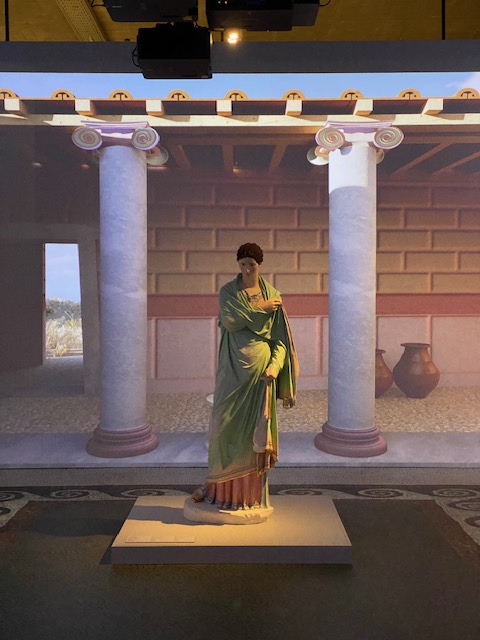
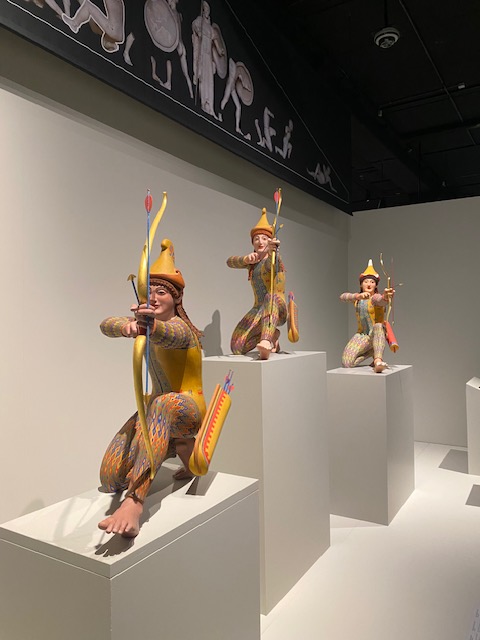
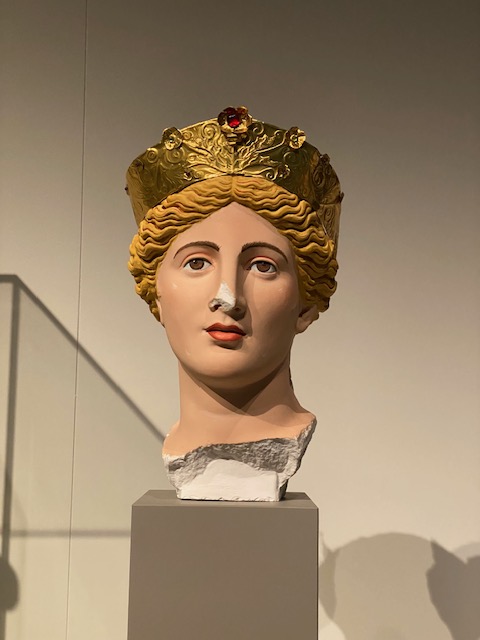
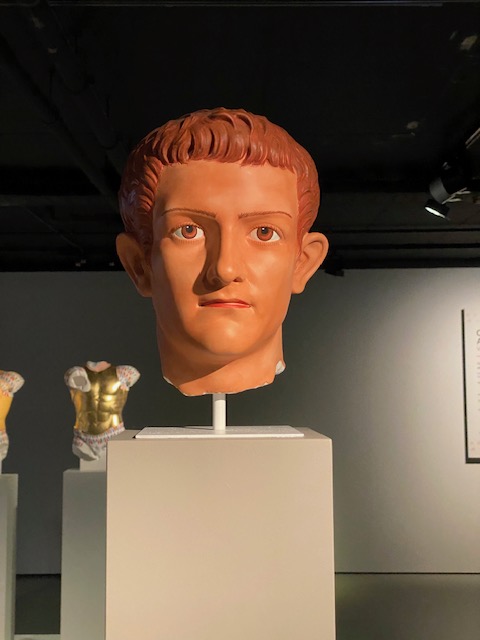
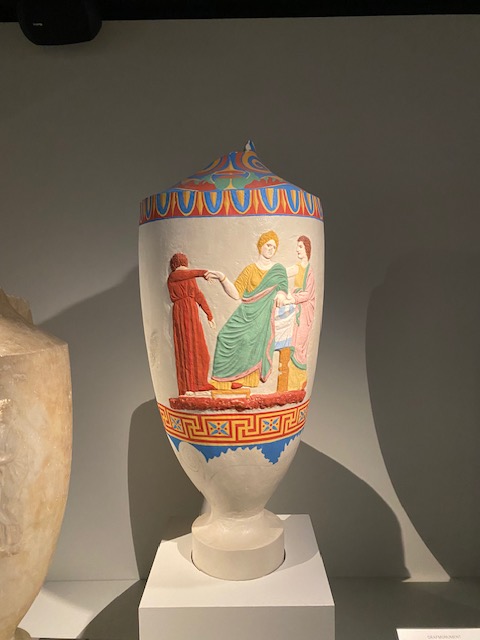
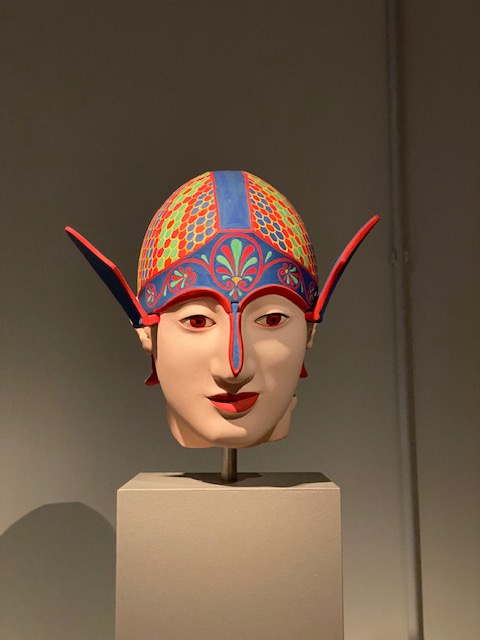
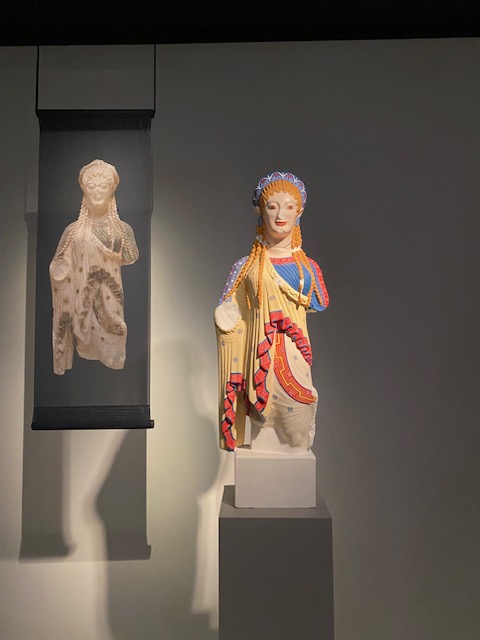
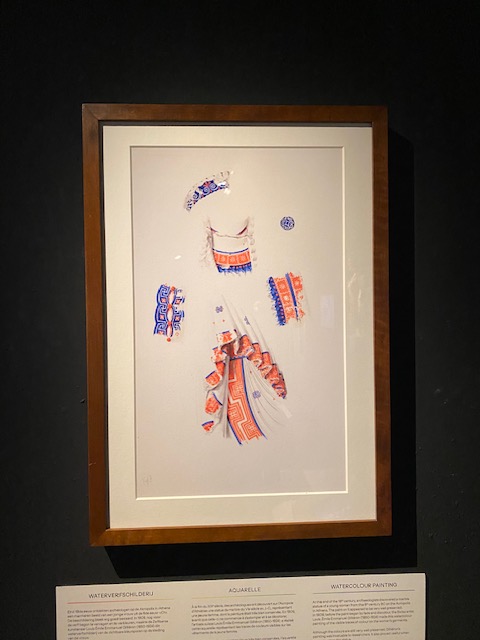
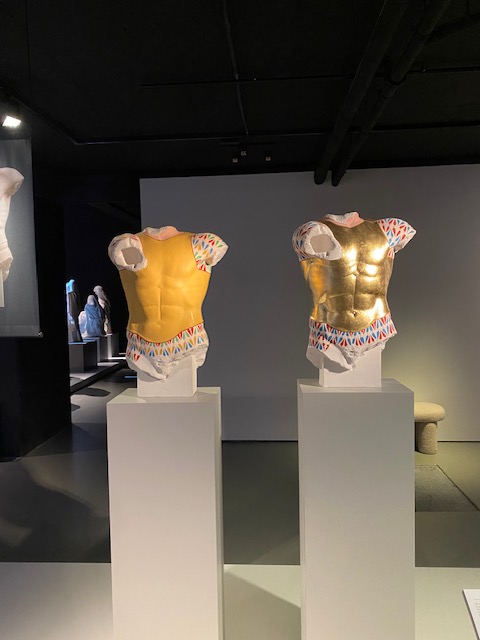
Educational journey of discovery
The path through the exhibition is clearly marked. Object labels are concise.
In videos you can see how the ancient Greeks and Romans made their sculptures, from cutting and filing to painting. There are many authentic tools in the display cases. You will also learn about the pigments – ochre, lead white, Egyptian blue – that the ancient artists used.
An audio tour gives additional explanations about the meaning that the statues had in classical antiquity. Screens give you an insight into their excavation history, scientific research, and reconstruction techniques.
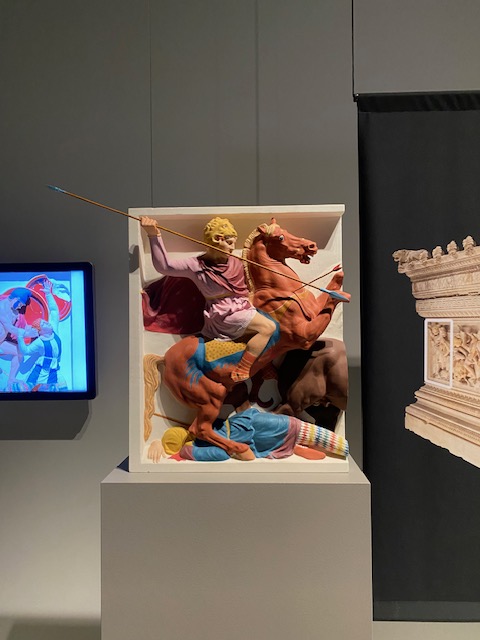
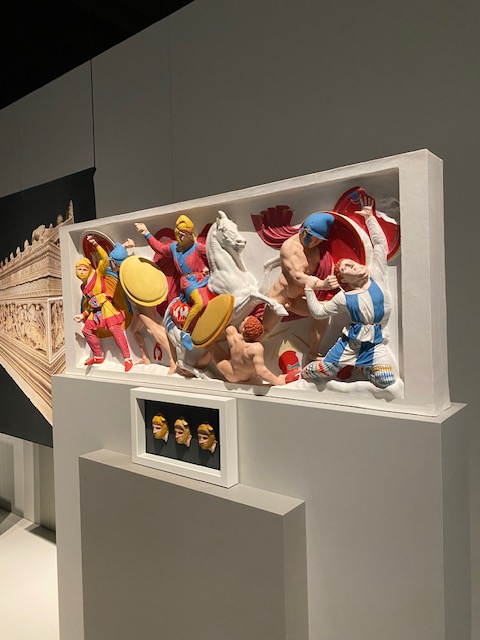
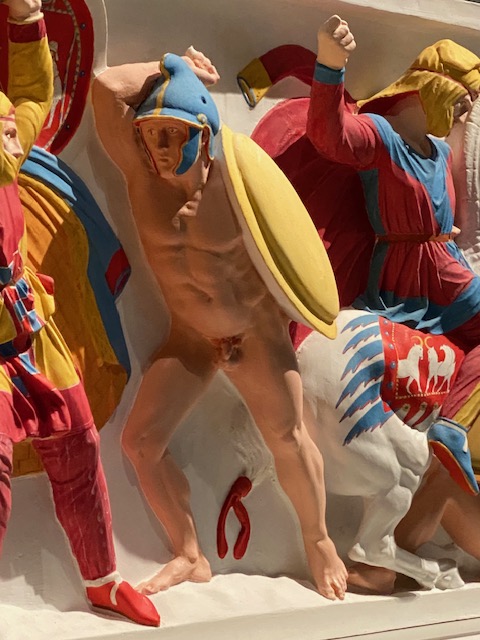
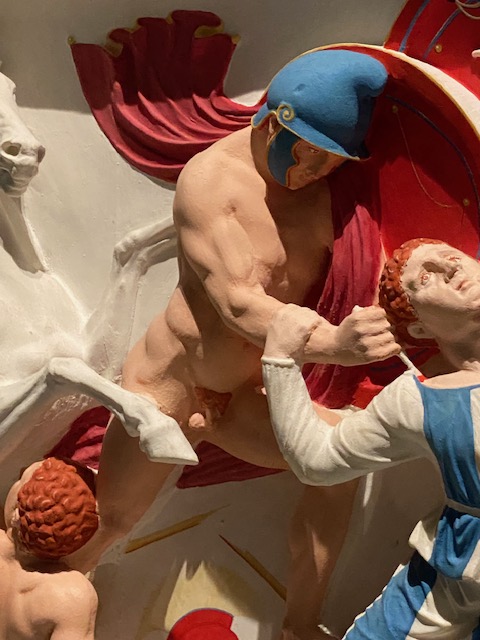
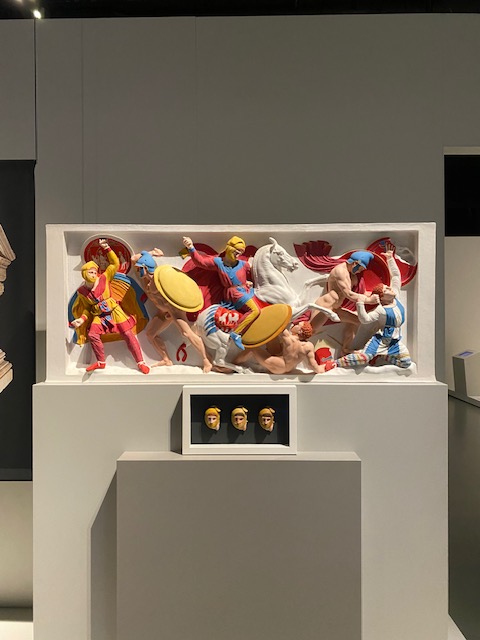
Fascinating and fun for children
There is a special audio tour for your children, with information tailored to 7- to 12-year-olds. Computer games with puzzles and drawing exercises encourage them to explore the colours and decorations on the reconstructions. Children are also briefly introduced to the work of the quarry workers, sculptors, and painters of that time.
On Sundays and school holidays in Flanders there is a creative workshop. This is included in the entrance fee. During this workshop, your children are invited to be inspired by the patterns on the sculptures. They can make their own design on a marble tablet and then colour it in. You can of course take the result home with you.
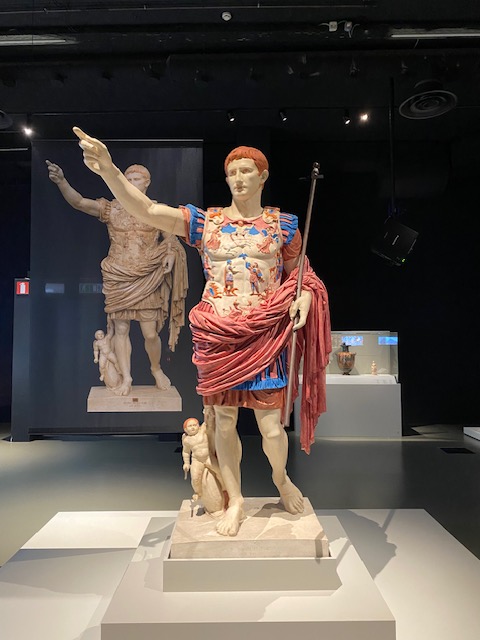


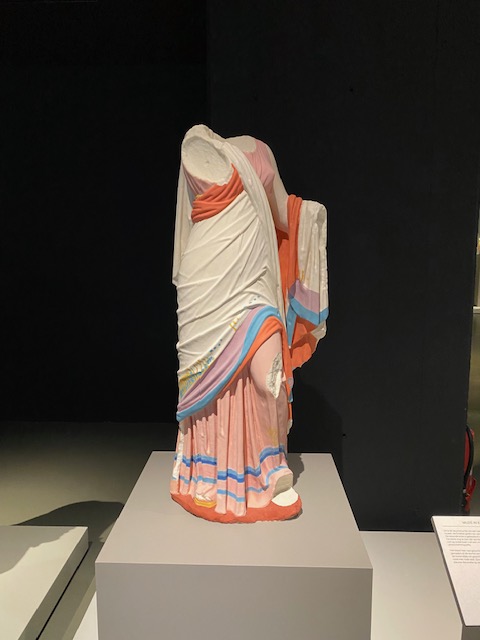

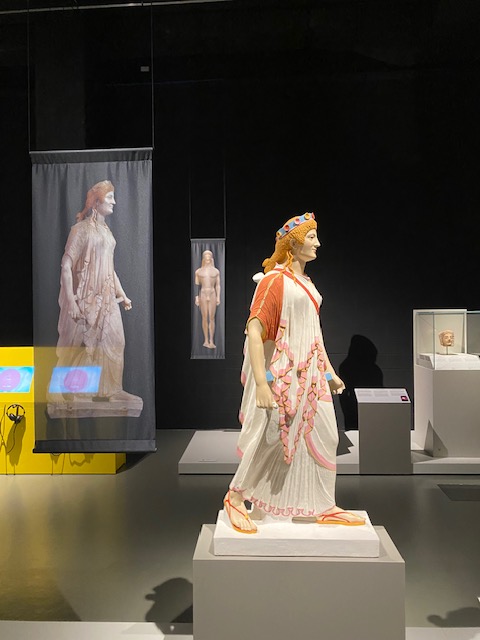
Moving statues … in bronze
One of the highlights of the exhibition are the reconstructions of some famous bronze sculptures: two ancient Greek warriors and a pair of statues known as ‘The Boxer‘ and ‘The Prince‘.
Those bronze sculptures looked more colourful in classical antiquity than you think. Gemstones served as eyes, while lips, nipples and eyelashes were finished with copper, and teeth with silver. The bronze sculptures are at least as surprising as the colourful marble statues.
The exhibition is organized in collaboration with Liebieghaus Skulpturensammlung in Frankfurt am Main.
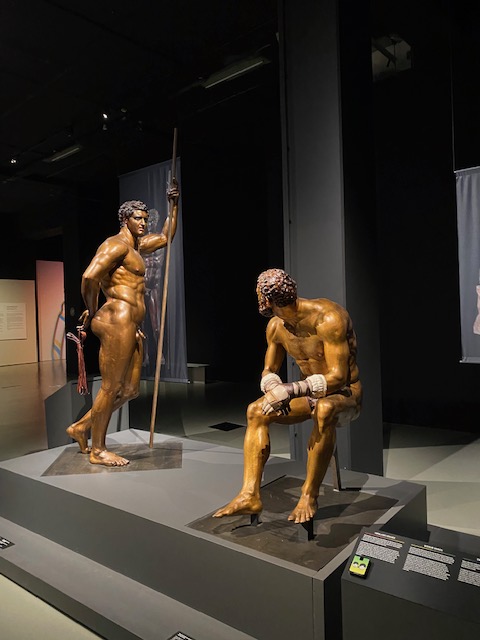
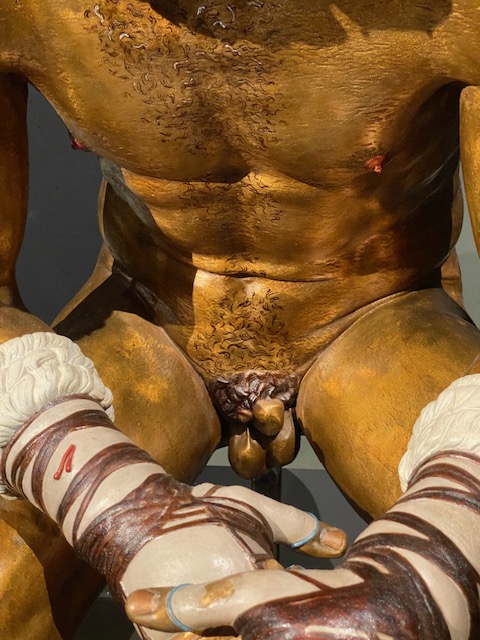
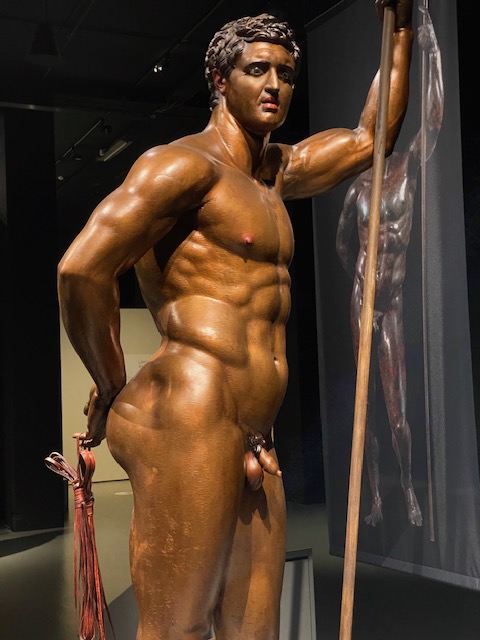
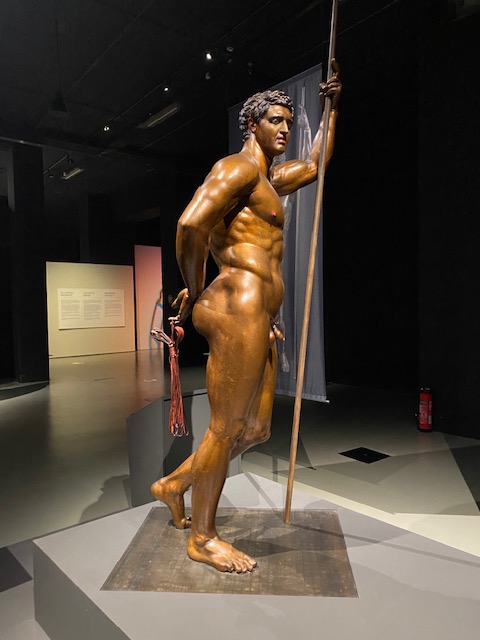
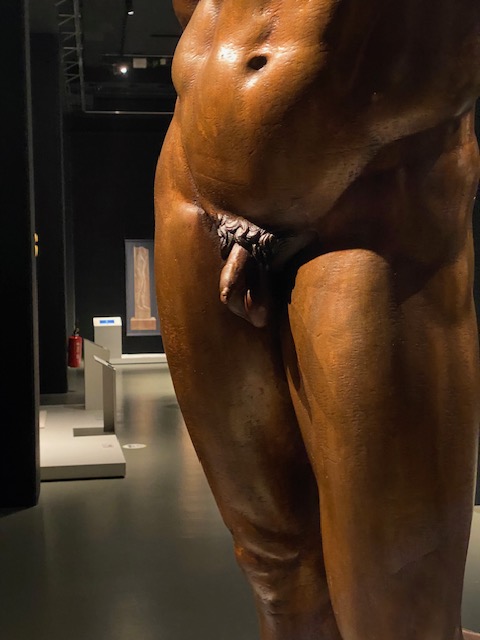
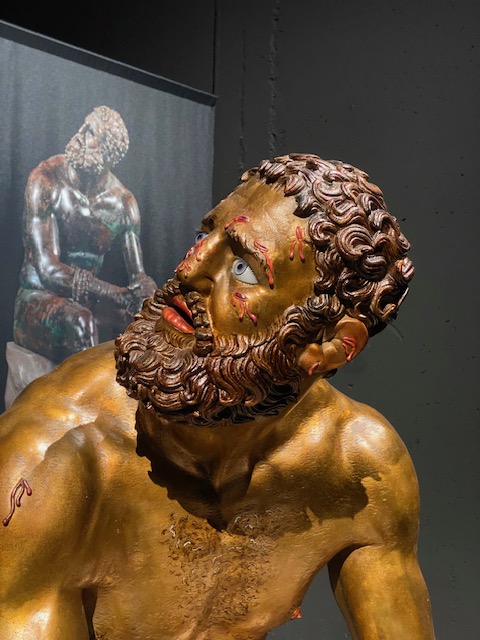
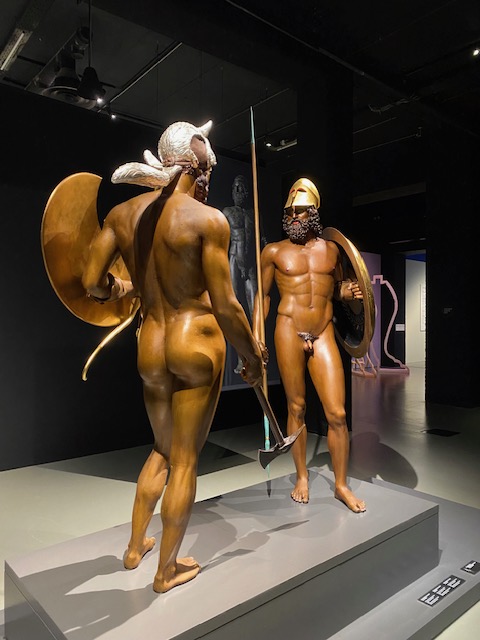
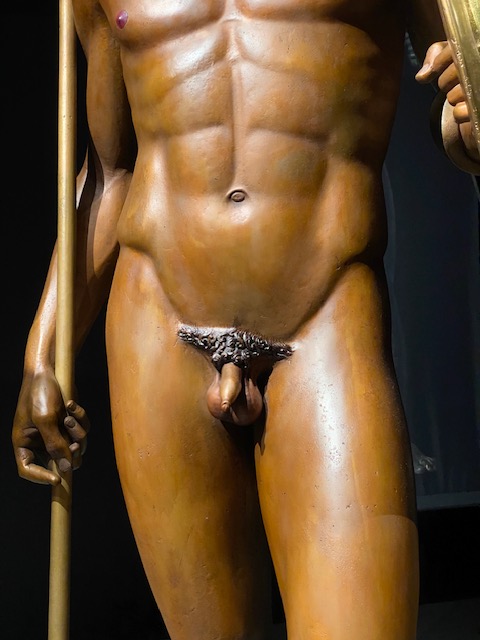
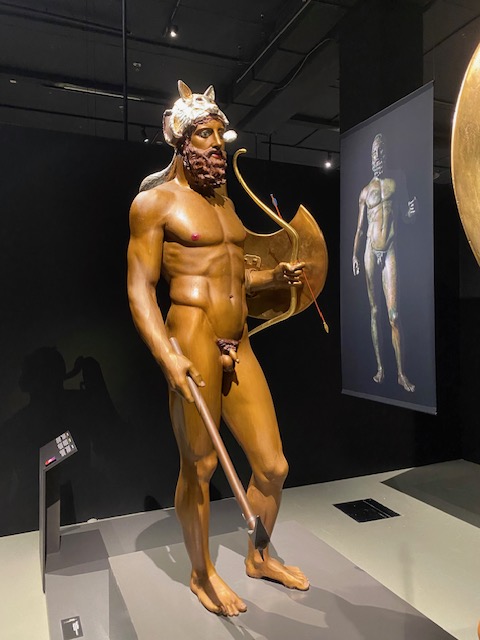
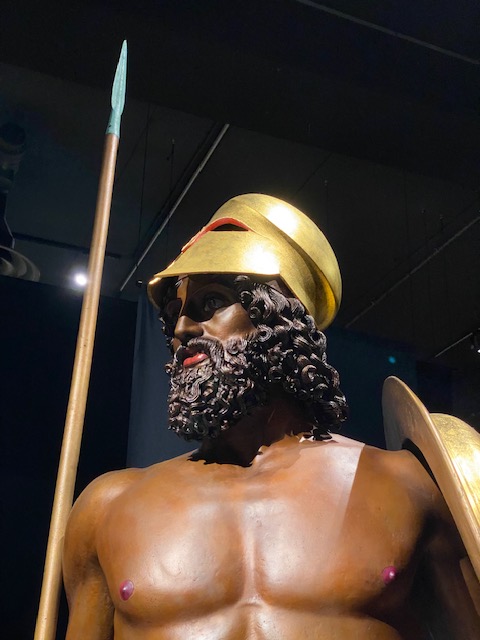
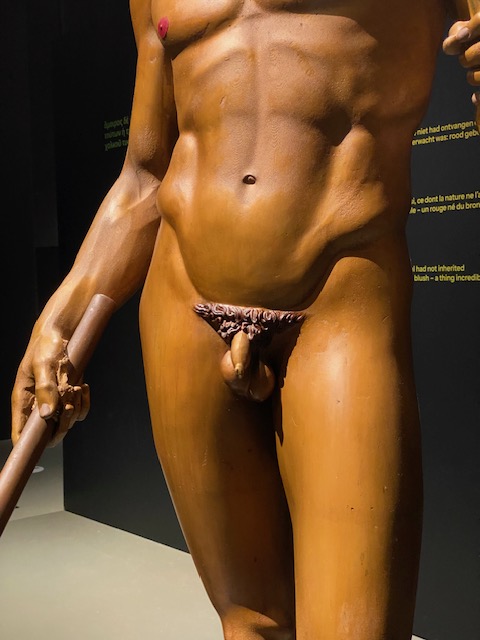
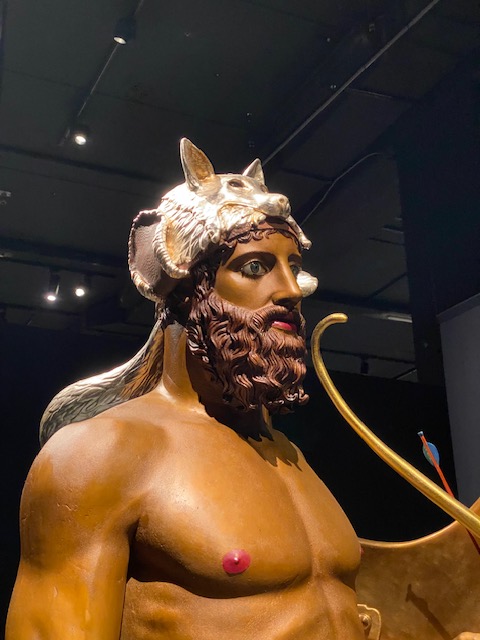
Artwork by Students from PXL-MAD School of Arts
Six students majoring in Liberal Arts at PXL-MAD School of the Arts immersed themselves in the theme of the temporary exhibition ‘Antiquity in Colour’. Each created a contemporary work of art that draws its inspiration from the multi-coloured ancient sculptures.
The students worked with a wide range of materials, such as wood, plaster, ceramics, and clay, and experimented extensively with colour. Some opted for their own, contemporary interpretation of the reconstructions on display in the exhibition. Others took the transience of the colours on the ancient statues as their approach.
You can admire these students’ impressive works at the end of the exhibition.
A visit
I studied Latin and Greek in school as a teenager and I still am quite into Antiquity and that era of history. I knew sculptures and temples were painted in ancient Greece, but seeing it in real life, gives it all another dimension.
Prof. Dr. Vinzenz Brinkmann and his wife Dr. Ulrike Koch-Brinkmann are mentioned a lot, not unlike Gunther von Hagens and his ‘Body Worlds‘ (‘Körperwelten‘). They want to make sure you know and remember théy had this great idea.
Sometimes I feel the enhancements are far-fetched and many liberties are taken. Many assumptions were made. But the result is pretty and interesting.
And yes, I did enjoy some close-ups on men’s crown jewels.
I also visited the permanent collection but that report will be for another time.

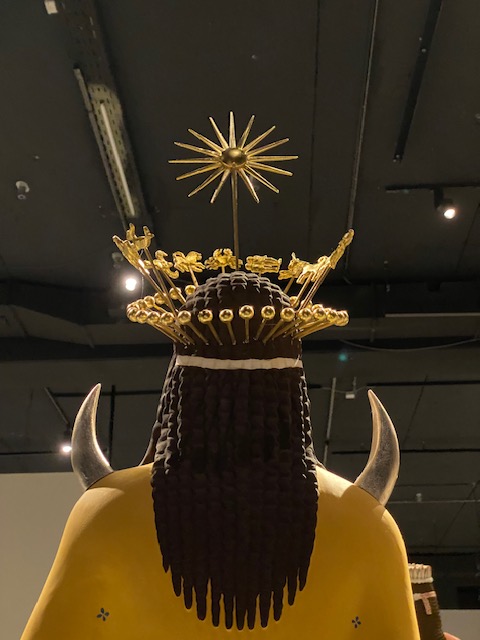
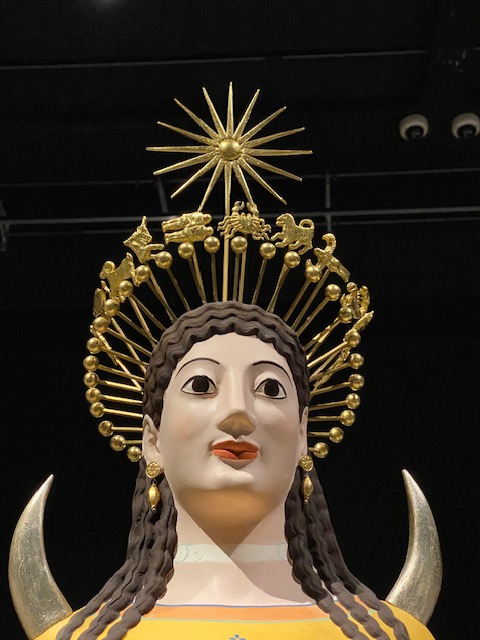
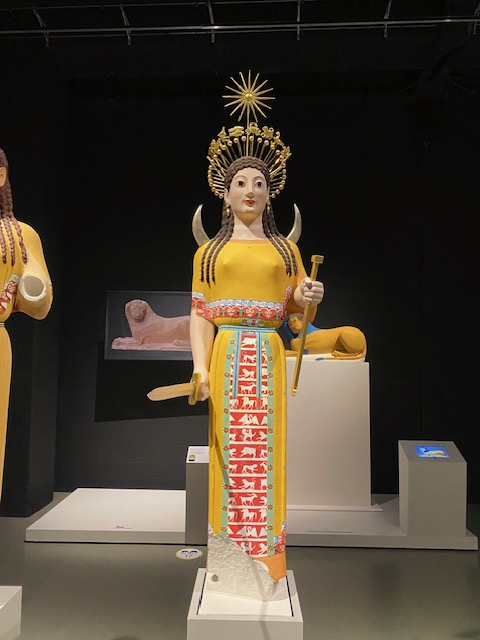
Practical
The target audience is both adults and children. The exhibition runs to 2 June. Explanations are available in Dutch, French and English. The website says a visite takes around 90 minutes, which I find a fair assessment. Photography is unrestricted, which is lovely.
Tongeren is small and the museum is easily reachable on foot from the station.
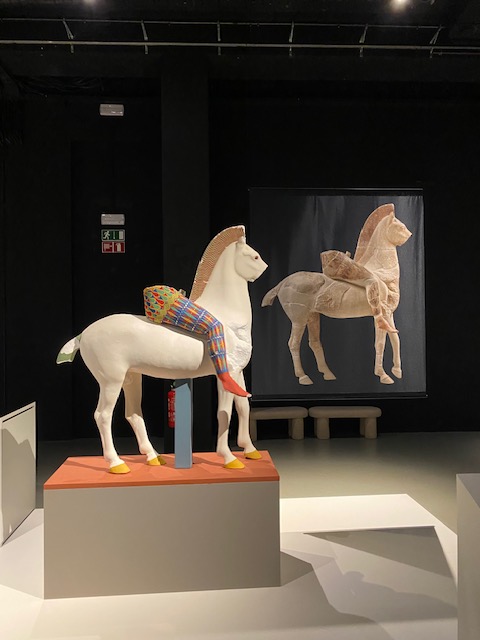

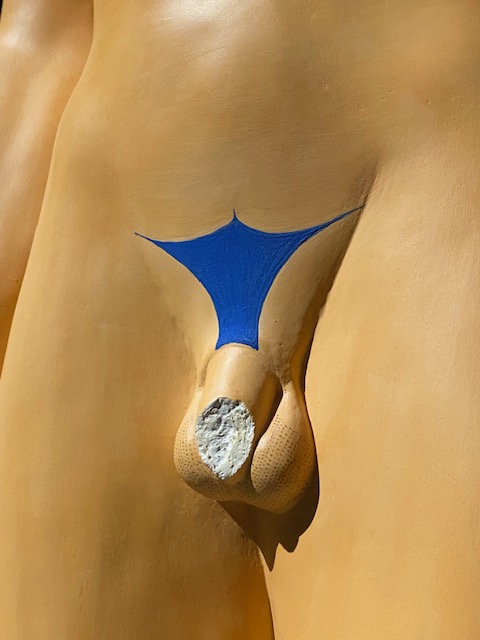
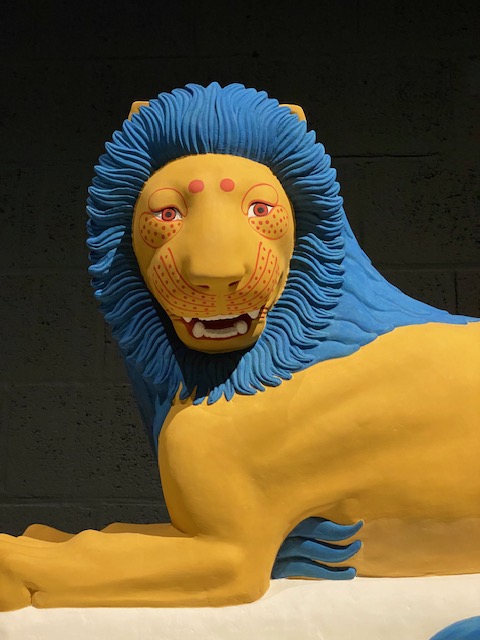
Buy your ticket
“Planning a visit to the Gallo-Roman Museum? Your best bet is to book your ticket in advance. That way you are guaranteed a visit to the museum”, the website says.
Well I didn’t and I had no trouble getting in. But the attendant did mention it.

💛
LikeLiked by 1 person
🏛️
LikeLike